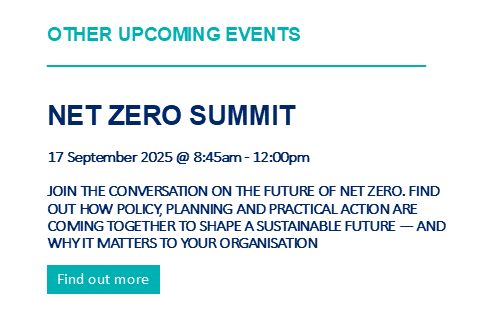- Details
Ofgem Approval of TM04+ Reforms – Fixing the Connection Queue
Steve Gummer and Tom Knox look into the Ofgem decision on a round of reform to the UK's energy grid.
On 15 April 2025, Ofgem published its decision to approve the Target Model Option 4+ (“TM04+”) package of reforms to the UK’s electricity grid connection regime.
This decision marks a significant step forward in the country’s efforts to accelerate decarbonisation and achieve its target of 95% carbon-free electricity by 2030.
The TM04+ reforms directly respond to the Government’s Clean Power 2030 Action Plan, which identifies the need for “fundamental reform of the connections process” as critical and urgent.
By ensuring that viable, strategically aligned energy projects are prioritised for connection to the electricity grid, the TM04+ framework is expected to unlock capacity for projects essential to the UK’s energy transition.
Addressing Grid Congestion and Speculative Projects
Before the introduction of TM04+, projects could secure a grid connection slot or join the connection queue without needing to demonstrate readiness or deliverability.
This has resulted in a connection backlog of commercially unviable projects (sometimes referred to as ‘zombie projects’), which in turn block viable, generation or demand ready projects from securing a connection to the grid.
The TM04+ reform package replaces this outdated “first come, first served” system with a more structured, criteria-based approach to managing the connection queue.
Under the new model, projects will be assessed against two key criteria:
- ‘Readiness’; and
- ‘Need’ in order to determine their priority and eligibility for grid connection.
Two-Gate Connection System
Projects will be allocated into one of two categories, Gate 1 or Gate 2, depending on how they meet the following criteria:
- Readiness – Is the project sufficiently advanced and viable for development?
- Need – Does the project align with the strategic system needs as defined by government priorities and the Clean Power 2030 objectives? These strategic alignment criteria are set and will be periodically updated by the UK Government to reflect evolving energy policy.
The assessment of whether a project is ‘needed’ might consider a range of factors including:
- Technology type – whether the technology aids decarbonisation goals and is able to improve energy resilience and security
- Geographic location – particularly in relation to grid constraints or demand growth areas
- Contribution to wider system value – such as flexibility, grid stability, or enabling other low-carbon connections.
This assessment will be undertaken by the National Energy System Operator (“NESO”) for transmission-level connections, and by the relevant Distribution Network Operator (“DNO”) for distribution-level connections.
While DNOs will use mirrored criteria, these may be tailored to reflect local network needs and operational considerations. For projects with a transmission impact, NESO and the DNO will coordinate the assessment, ensuring consistency.
The difference between the ‘Gate Offers’ and connection rights are as follows:
- Gate 1: Non-binding, indicative offers for projects that are not deemed sufficiently ready or strategically aligned.
- Gate 2: Firm connection offers, including confirmed location and connection date will be given for projects that meet both readiness and need criteria.
How Gate Offers Will Be Issued to New and Existing Applicants
Both new and existing applicants will have opportunities to apply for Gate 2 offers under TM04+. All projects, regardless of when they entered the queue, will need to demonstrate that they meet the required Readiness and Need criteria.
Existing projects already in the connection queue will be invited to apply for reassessment. If their application is successful, and the project is deemed both ready and needed, they will receive a Gate 2 offer.
However, if they fail to apply, withdraw from the reassessment process, or are not assessed as meeting the criteria, they will automatically fall into Gate 1 and receive only an indicative offer.
New applicants will be assessed from the outset under the TM04+ framework.
Which Projects are Subject to the TM04+ Reforms?
Generation and Storage Projects
TM04+ applies to all generation and storage projects that require a Transmission Impact Assessment (TIA). In England and Wales, this includes projects with a capacity of 1 MW or greater, although this threshold may be revised in future updates to the framework.
Demand Projects – Distribution Level
New demand projects connecting solely to the distribution network generally fall outside the scope of TM04+. These projects will continue to follow the existing DNO-led application and connection process.
Demand Projects – Transmission Level
Large demand projects connecting directly to the transmission network will be subject to the TM04+ framework. These projects must satisfy both the readiness and need criteria, although they are more likely to be classified as “needed” due to their role in balancing system demand. Projects meeting the readiness threshold are expected to receive Gate 2 offers promptly.
Projects Connected at a Distribution Level with Transmission Impact
Some distribution-connected projects may still have a significant effect on the transmission system due to their size, location, or operational characteristics. These projects, although physically connecting at the distribution level, must undergo a Transmission Impact Assessment (TIA) and will fall within the scope of TM04+.
This includes:
- Larger generation and storage assets (e.g., solar farms, battery storage) connected at distribution voltage levels, but with capacity thresholds that trigger transmission-level impacts.
- Projects located in constrained areas of the grid where their connection could influence wider system stability or require reinforcement at the transmission level.
Such distribution-connected projects with a transmission impact will need to demonstrate both readiness and strategic alignment in line with the TM04+ Gate 1/Gate 2 framework. The relevant DNO will manage the connection application, but NESO will review the project’s transmission impact and contribute to the assessment of its priority.
In practice, this means that:
- Viable and strategically aligned distribution-level projects with a transmission impact may be fast-tracked with a Gate 2 offer, especially where they support grid flexibility or enable decarbonisation targets.
- Projects that are less advanced or misaligned with system needs may only receive a Gate 1 indicative offer until further development is demonstrated.
This change ensures that all projects, whether connected at the transmission or distribution level, are evaluated based on their actual impact on the electricity system, supporting a fairer, more efficient, and strategically aligned connections regime.
Steve Gummer is a Partner and Tom Knox is an Associate at Sharpe Pritchard LLP.
For further insight and resources on local government legal issues from Sharpe Pritchard, please visit the SharpeEdge page by clicking on the banner below.
This article is for general awareness only and does not constitute legal or professional advice. The law may have changed since this page was first published. If you would like further advice and assistance in relation to any issue raised in this article, please contact us by telephone or email
|
Click here to view our archived articles or search below.
|
|
ABOUT SHARPE PRITCHARD
We are a national firm of public law specialists, serving local authorities, other public sector organisations and registered social landlords, as well as commercial clients and the third sector. Our team advises on a wide range of public law matters, spanning electoral law, procurement, construction, infrastructure, data protection and information law, planning and dispute resolution, to name a few key specialisms. All public sector organisations have a route to instruct us through the various frameworks we are appointed to. To find out more about our services, please click here.
|
|
OUR RECENT ARTICLES
December 10, 2025
Sharpe Pritchard appointed to £60m London Boroughs’ Legal Alliance frameworkSharpe Pritchard, one of the UK’s leading public law firms, has been re-appointed to the London Boroughs’ Legal Alliance (LBLA) Solicitors Panel.
November 20, 2025
Strengthening the standards and conduct framework for local authorities in EnglandJames Berry offers his insight into how the proposed changes to standards and conduct rules will affect local authorities.
November 04, 2025
Procuring and operating open frameworks under the Procurement Act 2023Chantelle Pink offers advice to authorities on open frameworks and how to procure them.
October 31, 2025
Building Solar – 5 Top Tips for Solar Farm Construction ContractsSolar farm construction contracts are in focus following fascinating insights into the continuing global uptake and expansion of renewables, and particularly solar, within the 2025 mid-year report of Ember, a global energy think tank.
|
|
OUR KEY LOCAL GOVERNMENT CONTACTS
|
||
|
Partner 020 7406 4600 Find out more |
||
|
Partner 020 7406 4600 Find out more |
||
|
Rachel Murray-Smith Partner 020 7406 4600 Find out more |







 Catherine Newman
Catherine Newman
